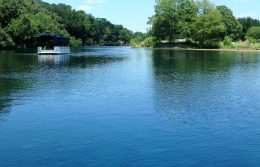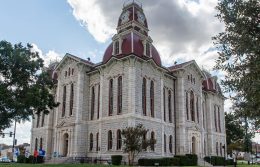A Road Trip Through Texas’ ‘European’ Cities
Towns are often named after their founders or notable early residents. But Texas also boasts a surprising number whose names are the same as some of the great cities in the world. As a result, you can jump in the car and, in a single day, tour some of the most famous places in the world — or at least Texas’ versions of them. So, fill up the tank and let’s tour some of the “European” cities in Texas.

Paris
Where else to start than in the cradle of East Texas civilization? The town of Paris was founded during the Texas Republic by the merchant George W. Wright, and it was one of Wright’s employees who came up with the idea of naming it after the French city. The town boomed thanks to the arrival of the railroad, and today, it remains a commercial hub and manufacturing center. It takes pride in its origins, boasting one of the tallest Eiffel Towers outside of the French capital — only this version is capped with a giant cowboy hat.
Dublin
From Paris, head southwest through the Dallas-Fort Worth metroplex until you arrive in Dublin. No one is completely certain how this small Texas town got its name. Founders could have named it after the Irish capital, or it could have been named for the shout that rang out during skirmishes with Native Americans: “Double In!” Today, however, they commemorate the association in the name by hosting a lively and enormous St. Patrick’s Day celebration every year.
London
From Dublin, head deep into Hill Country to discover a London that is not beset by frequent fog and continual rain. There were big hopes when London was founded in the 1870s that the town square would be the center of a new county. Unfortunately, its aspirational name didn’t result in the boom its founders wanted. The little, unincorporated town only has a population of a few hundred today.
Florence
Next, we head to a town that shares its name with the seat of the Italian Renaissance. In reality, Florence, Texas, may actually be named after Florence, Alabama, where the town’s first postmaster once lived. Unlike its Italian counterpart, Florence is not known for producing any notable artists, but it was home to a cheese factory in its heyday.
Vienna
Heading south from Florence toward the Gulf Coast, you will come across another famous center of culture: Vienna. While the town was founded by Anglo-American planters in 1840, many of the German immigrants who began to move to Texas felt comfortable putting down roots in a town that bore a familiar name. Today, however, only around 40 people call it home.
Berlin
About 80 miles northwest of Vienna, you’ll find yourself in another great Germanic city: Berlin. It was founded in the 1850s by Germans who were beginning to arrive in Texas en masse and settling in Central Texas. The area remained primarily agricultural, and Texas’ Berlin remains a small, unincorporated, rural community.
Moscow
The final leg of the journey takes us east to Moscow — but not that far east. Moscow, Texas, was founded in the Piney Woods in the 1840s. It was originally called Greenville, but in 1853 a postmaster must have decided Texas already had too many Greenvilles and demanded the town change its name. No one quite knows why they chose to borrow the new name from the Russian capital. During the 19th century, it grew into the largest town in Polk County, even boasting its own streetcar at one time. But as the lumbering industry upon which Moscow depended dwindled, so did the town’s fortunes. Today, it is a little community of around 170 people.
As you trek across the European cities in Texas, there’s no better way to remind yourself of where you really are than with the ultimate Texas road trip playlist.
© 2021 Texas Farm Bureau Insurance



